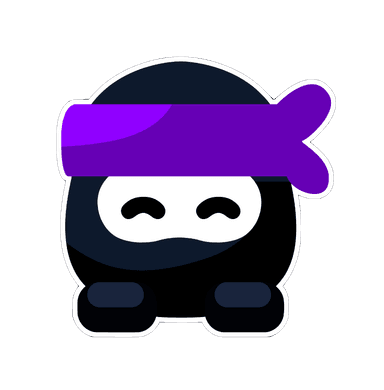Introduction
Many IB students panic when they realize their predicted or mock grades in Computer Science aren’t where they want them to be. Sitting at a 4 can feel discouraging, especially if you’re aiming for a 7. But here’s the truth: raising your grade dramatically in just one month is possible, if you’re disciplined, strategic, and focused on exam technique.
In this guide, we’ll break down how to go from a 4 to a 7 in four weeks by focusing on the highest-impact areas of the syllabus, refining exam skills, and using the right resources.
Quick Start Checklist
- Gather your notes, RevisionDojo study guides, and past papers.
- Decide whether you’re aiming for SL or HL level strategies.
- Commit to at least 2–3 hours of focused study daily.
- Identify your weakest paper (Paper 1 or Paper 2) and target it first.
- Make a four-week timetable with realistic daily goals.
Why a Jump From 4 to 7 Is Possible
A 4 usually means you understand some basics but lose marks due to:
- Weakness in coding (Paper 1).
- Poor application of theory (Paper 2).
- Misinterpreting command terms.
- Incomplete answers or poor time management.
The difference between a 4 and a 7 often isn’t intelligence — it’s exam technique, structure, and targeted practice.
Four-Week Study Plan
Week 1: Build Your Foundations
- Revise system fundamentals: hardware, software, networks.
- Drill programming basics: variables, loops, arrays, and conditionals.
- Practice 2–3 Paper 1 coding questions daily.
Week 2: Core Algorithms & Paper 1 Practice
- Memorize and practice key algorithms: linear/binary search, bubble sort, selection sort, recursion basics.
- Trace algorithms step by step — IB loves to test logic.
- Do a timed Paper 1 section every other day.
- Review all mistakes using the mark scheme.
Week 3: Paper 2 & Real-World Application
- Revise databases (SQL), operating systems, networks, and SDLC.
- Practice Paper 2 structured questions, making sure to link to real-world technology contexts.
- Learn to apply theory with concrete examples (e.g., cloud storage, mobile apps).
Week 4: Exam Simulation & Refinement
- Sit one full Paper 1 and one full Paper 2 under timed conditions.
- Focus on command terms — practice “evaluate,” “explain,” and “outline.”
- Review your weakest areas one last time with RevisionDojo notes.
- Spend the final 48 hours doing light review and exam mindset preparation — don’t cram new material.
High-Yield Areas to Focus On
If you’re aiming for a jump in one month, prioritize:
- Algorithms and pseudocode (Paper 1).
- Databases and SQL (Paper 2).
- Software Development Life Cycle (SDLC).
- Networking basics and protocols.
- Object-Oriented Programming (HL).
For structured breakdowns, see IB Computer Science Notes.
Exam Technique: The Secret to Level 7
- Answer structure: For Paper 2, always tie theory to real-world examples.
- Clarity over perfection: In Paper 1, pseudocode doesn’t need perfect syntax — logical flow is enough.
- Time management: Practice finishing 10 minutes early to check work.
- Command terms mastery: Don’t “describe” when the question says “evaluate.”
- Partial credit: Even half-finished code can earn marks if the logic is sound.
Realistic Study Commitment
To move from a 4 to a 7, you’ll need to commit around 70–90 hours across the month:
- 2–3 hours on weekdays,
- 4–5 hours on weekends.
It’s not just about time spent, but focused, active revision.
Frequently Asked Questions
1. Is one month enough to get a 7?
Yes — if you already have a 4, it means you understand the basics. A month of focused practice on past papers, algorithms, and applied theory can realistically push you into the 6–7 range.
2. Should I focus more on Paper 1 or Paper 2?
Identify your weakest area and spend extra time there. Many students sitting at a 4 underperform in Paper 1 coding. But neglecting Paper 2 theory will cap your score. Balance both, with slightly more time on your weaker paper.
3. What role does the Internal Assessment play?
By exam season, your IA is usually submitted. But revising the IA structure and the software development cycle can give you a boost in Paper 2, where examiners often test applied development questions.
4. Do I need a tutor to jump from 4 to 7?
No. With self-discipline, RevisionDojo notes, and consistent past paper practice, you can make the jump. A tutor can help with accountability, but it isn’t essential.
5. How do I stay motivated for a full month?
Break your goals into weekly chunks. Celebrate small wins — like mastering bubble sort or finishing a past paper under time. Momentum builds when you see progress.
Conclusion
Going from a 4 to a 7 in IB Computer Science in one month is ambitious — but completely possible. The key is to focus on high-yield topics, exam technique, and daily practice. With a clear plan and discipline, you can transform your understanding and performance in just four weeks.
For extra support, dive into RevisionDojo’s resources: IB Computer Science Notes, How to Get a 7 in IB Computer Science, and our list of Recommended Textbooks.

